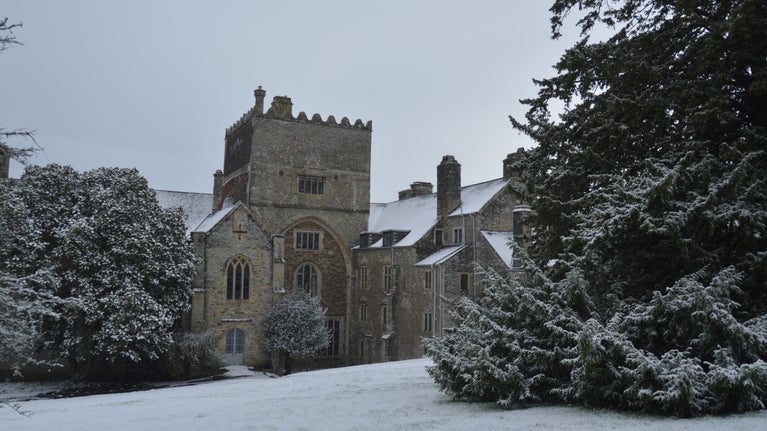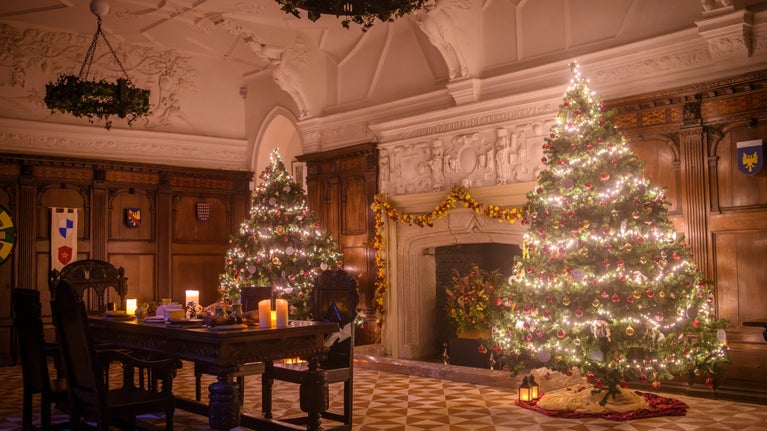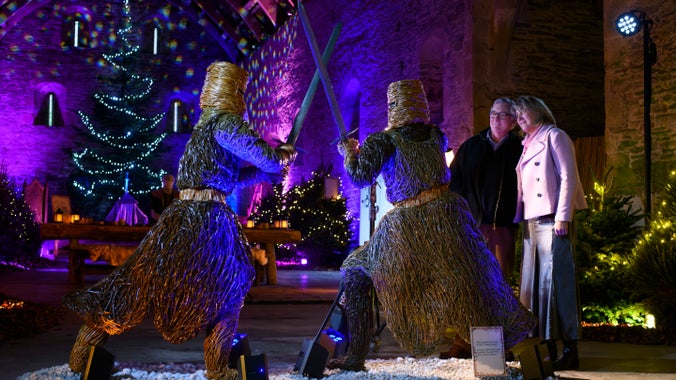
Discover more at Buckland Abbey
Find out when Buckland Abbey is open, how to get here, the things to see and do and more.

As you wander around Buckland Abbey, you'll discover fascinating tales spanning eight centuries. It’s been home to Cistercian monks, and seafarers who changed the shape of the house and the fate of the country. The Abbey is part museum, part house, and filled with treasures. Among the highlights are the medieval Great Barn, which has remained virtually unchanged since it was built centuries ago.
Buckland's Rembrandt self portrait is away on tour to other National Trust properties at the moment. If you want to catch the painting in one of the temporary locations, it will be at: Kingston Lacy - 12 September 2025 to 16 November 2025. It returns after Christmas from 12th January to 22 March 2026; Dunham Massey- 27 March to 12 July 2026; Upton House- 17 July 2026 to 08 November 2026. A full size print of the portrait along with information about the painting and the identification process will still be available to see at Buckland Abbey.
The house today still holds evidence of the original medieval complex, with hidden staircases, archways and original plaster work to discover.
The medieval abbey was pulled apart after the Dissolution of the monasteries and bought by the Grenville family. It was eventually inherited by Sir Richard Grenville, who converted it into a Tudor mansion home and carried out major renovations, creating the house seen today.
Evidence of Grenville’s conversions can be seen when approaching the Buckland Abbey; markings on the wall show where the south transept of the church once stood.
The house was later sold to the privateer Sir Francis Drake, and information on Drake’s life can be found on the top floor of the Abbey in the Lifetimes gallery.
In 1938, some 400 years after the Dissolution of the monasteries, the house was destroyed once again after a fire broke out on the middle floor. While Buckland’s original house layout was destroyed, the bottom floor was left intact.
Years later, Plymouth City Council and the National Trust joined to repair the property. The aim was to convert Buckland Abbey into a museum to showcase the life of Sir Francis Drake and the Abbey’s naval history.
The Abbey today still houses some of the special treasures that are on loan from the Plymouth City Museum.
Please note that over the winter, the Abbey will be open from 29 November - 4 January for Christmas (not Christmas day), and otherwise closed until 14 February for winter conservation work.

On display in the Nave gallery, the Pym Murals commemorate Buckland Abbey’s most famous resident Sir Francis Drake and his circumnavigation of the globe and participation in the battle against the Spanish Armada fleet.
The paintings were commissioned in the 1950s by the Astor family and created by Roland Pym, an established mural painter and set designer who undertook many large-scale designs.
They vary from 1.4 to 4.8 metres wide and illustrate events from Sir Francis Drake’s life including his ship, The Golden Hind, the route he took from Plymouth and circumnavigated the globe, the capturing of the Spanish flagship, ‘The “Nuestra Senora del Rosario” and the final, victorious battles as part of the Armada.

The Great Barn was used by the Medieval monks to sort and winnow corn. Today it houses the cider press, which acts as a reminder of the 27 acres of orchards and farmland that once stretched down to the river.
Monks worked as ploughmen, dairymen, shepherds, carpenters and masons. They also sold timber from the estate and benefited from local silver mining. The scale of the Great Barn gives a sense of this wealth; not only would wool, fleece, hides and crops be stored there, but also tithes (produce given as a form of tax) from local farmers.
The Nave Gallery, the kitchen and the Great Hall can all be accessed on the level. The chapel can be viewed from the corridor but there are deep steps into the room itself. All of the other rooms within the Abbey are accessed via staircases.
There is level access into the Great Barn.
For more information, please see the Access Statement on the visitor information page or call 01822 853607.

Find out when Buckland Abbey is open, how to get here, the things to see and do and more.
Discover Buckland's ancient woodland on one of three colour coded routes. With abundant wildlife and far reaching views, it's a peaceful and fascinating place to enjoy.

Discover a wealth of history at Buckland Abbey, from its time as a medieval farming monastery to the famous Tudor explorers who called it home.

Take a break at the Ox Yard Café, which serves tea, coffee, light lunches and sweet treats, before finding a special gift or souvenir in the National Trust shop, art galleries and second-hand bookshop.

Buckland Abbey is a two pawprint rated place. There are plenty of dog-friendly walks through the woodland and countryside to explore and dogs are welcome to relax in the Ox Yard Café.

From beautiful blooms to bountiful harvests, the gardens at Buckland Abbey are full of colour and seasonal interest. Soak up the history of this special place as you admire the planting, or simply enjoy the peace and tranquillity as you sit a while on one of the benches.
